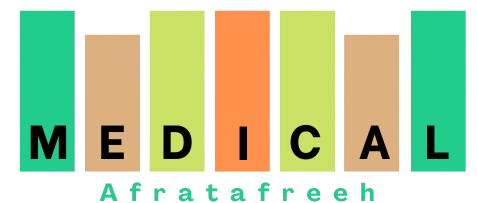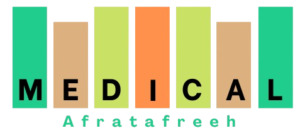Navigating the sea of medical textbooks and USMLE prep materials can feel overwhelming. With the right resources, however, you can transform this journey from chaotic to conquerable. This guide distills the highest-yield MBBS books and USMLE tools trusted by top medical students and educators worldwide.
Core Resources for USMLE Dominance
Building a solid foundation requires strategically selected resources that cover high-yield concepts efficiently. These are non-negotiables for every serious medical student:
- First Aid for the USMLE Step 1 (2025): Universally hailed as the Step 1 bible, this annually updated guide is crowdsourced from top scorers and faculty-reviewed. Its 860+ pages distill high-yield facts, mnemonics, and 1,000+ color images across foundational sciences (Biochemistry, Immunology, Pharmacology) and organ systems. The rapid review section is indispensable for last-minute cramming. Think of it as your blueprint – but pair it with deeper resources for complex topics like physiology pathways .
- UWorld Qbank: The undisputed gold standard question bank. With over 2,400+ clinically-vignetted questions, its detailed explanations teach critical reasoning and exam strategy. Treat it as a primary learning tool, not just an assessment. Annotate your First Aid based on UWorld insights. Studies consistently show correlation between UWorld usage and high scores .
- Pathoma (Dr. Hussain Sattar): A game-changer for pathology (45-55% of Step 1!). Dr. Sattar’s textbook and videos masterfully simplify disease mechanisms. His mantra – “*Pathology is the study of patterns*” – helps you diagnose conditions logically. Essential for integrating histology, pathophysiology, and clinical presentation .
- SketchyMedical: Visual mnemonics revolutionize memorization-heavy topics. Sketchy’s microbiology, pharmacology, and pathology sketches use memorable stories and symbols to encode complex information (e.g., Staphylococcus depicted as a purple “grape cluster” fortress). Perfect for visual learners drowning in bug-and-drug details .
USMLE Step 1 Content Weighting (Key Disciplines)
| Discipline | Exam Weight | Must-Have Resource |
|---|---|---|
| Pathology | 45-55% | Pathoma + Robbins Atlas |
| Physiology | 30-40% | Costanzo Physiology (BRS or Textbook) |
| Pharmacology | 10-20% | SketchyPharm + Kaplan Lecture Notes |
| Microbiology/Immunology | 15-25% | SketchyMicro + First Aid Sections |
| Biochemistry/Genetics | 10-20% | Kaplan Biochemistry + First Aid |
Subject-Specific Deep Dives: Targeted Resources for Weak Areas
While core resources cover breadth, target weaknesses with specialized texts:
Anatomy & Neuroanatomy:
Kaplan Anatomy Lecture Notes: Excellent system-based organization integrating embryology and neuroanatomy. Use alongside Netter’s Atlas of Human Anatomy (7th Ed) for unparalleled visuals. For spinal cord/brainstem mastery, High-Yield Neuroanatomy is concise yet comprehensive .
Pro Tip: Focus on clinical correlates (e.g., brachial plexus injuries, stroke syndromes) over isolated facts. Anatomy is best learned via question banks and image-based quizzes.
Biochemistry & Genetics:
Kaplan Biochemistry & Medical Genetics: Breaks down complex pathways (Glycolysis, TCA, Urea Cycle) and molecular biology concepts. Clarifies genetic inheritance patterns and testing modalities. Supplement with First Aid’s genetics tables and Lippincott Illustrated Reviews: Biochemistry for deeper dives .
Pro Tip: Resources like Boards & Beyond offer superb video lectures explaining metabolic regulation and genetic disease mechanisms conceptually
Physiology:
Costanzo Physiology (BRS or Textbook): Renowned for its clarity and clinical integration. Explains principles (e.g., cardiac output, glomerular filtration) in a step-by-step manner perfect for USMLE. Guyton & Hall Textbook offers exhaustive detail if needed .
Pro Tip: Physiology is about mechanism mastery. Focus on “why” things happen (e.g., RAAS activation in hypotension) over rote memorization.
Pharmacology:
SketchyPharm + Kaplan Pharmacology: Sketchy encodes drug classes via stories (e.g., Beta-blockers as “Beta” fish blocking receptors). Kaplan provides robust mechanism-of-action and adverse effect profiles. Lippincott’s Pharmacology is excellent but denser .
Behavioral Science/Biostatistics:
High-Yield Biostatistics & Epidemiology: Covers essential concepts (Sensitivity/Specificity, PPV/NPV, Study Designs) concisely. Kaplan Behavioral Science videos effectively explain psychopathology theories and communication ethics .
Strategic Implementation: Building Your Study Plan
Owning top resources isn’t enough. Deploy them strategically:
- Integrate, Don’t Isolate: Never read First Aid passively cover-to-cover. Annotate it heavily using UWorld explanations, Pathoma insights, and Sketchy symbols. Turn it into your personalized knowledge repository .
- Active Recall > Passive Reading: Use UWorld/Anki flashcards aggressively. After studying a topic (e.g., Heart Failure from Pathoma/First Aid), immediately do related Qbank questions. This forces retrieval practice – the key to long-term retention.
- Spaced Repetition is Sacred: Schedule dedicated Anki review time daily. Tools like AnKing deck (pre-made cards tagged to First Aid/Sketchy/Pathoma) automate this process efficiently .
- Simulate Exam Conditions: Take timed NBME practice exams and the UWSA (UWorld Self-Assessments) periodically. Analyze performance gaps rigorously – was it knowledge lapse, question misinterpretation, or time management? .
- Leverage Institutional Resources: University libraries often provide free access to BoardVitals, Draw It to Know It, AccessMedicine (Harrison’s, Current Medical Dx & Tx), and Case Files collections. Don’t overlook these!
FAQ: Your MBBS/USMLE Resource Questions Answered
Q: Can I pass Step 1 with just First Aid and UWorld?
A: While theoretically possible for exceptional students, most need supplemental resources for challenging areas (e.g., Pathoma for pathology, Sketchy for micro/pharm). First Aid is a review tool, not a primary learning text for complex concepts .
Q: How long should USMLE Step 1 prep take?
A: Dedicated study periods typically range 4-6 months after completing foundational MBBS coursework. Consistency (6-8 focused hours daily) trumps cramming. Start integrating Qbanks early during MBBS years .
Q: Are Kaplan Lecture Notes worth the investment?
A: The 7-book Kaplan Step 1 set (Anatomy, Biochem, etc.) is invaluable if you need structured, detailed content review – especially if basic sciences feel rusty. If your foundation is strong, selectively use them for weaker subjects .
Q: Which anatomy atlas is best – Netter, Gray’s, or Rohen?
A: Netter’s Atlas (7th Ed) is the gold standard for illustrated clarity and clinical relevance. Gray’s Anatomy for Students is excellent for dissections. Rohen’s offers real cadaver photos. Choose one based on your learning style, but Netter integrates best with USMLE prep .
Q: Is Goljan Audio/Rapid Review Pathology still relevant?
A: While some students swear by Goljan’s deep integration, Pathoma has largely become the preferred modern resource due to its concise, mechanistic approach tailored to current Step 1 content .
Success hinges not on hoarding resources, but on mastering a curated few with discipline. Build your foundation with First Aid + UWorld + Pathoma + Sketchy. Target weaknesses using subject-specific deep dives like Costanzo or High-Yield. Implement active recall, spaced repetition, and relentless question practice. Trust the process, leverage institutional tools, and remember: consistent, strategic effort with the right materials turns the impossible into the inevitable. Your medical journey deserves nothing less.


